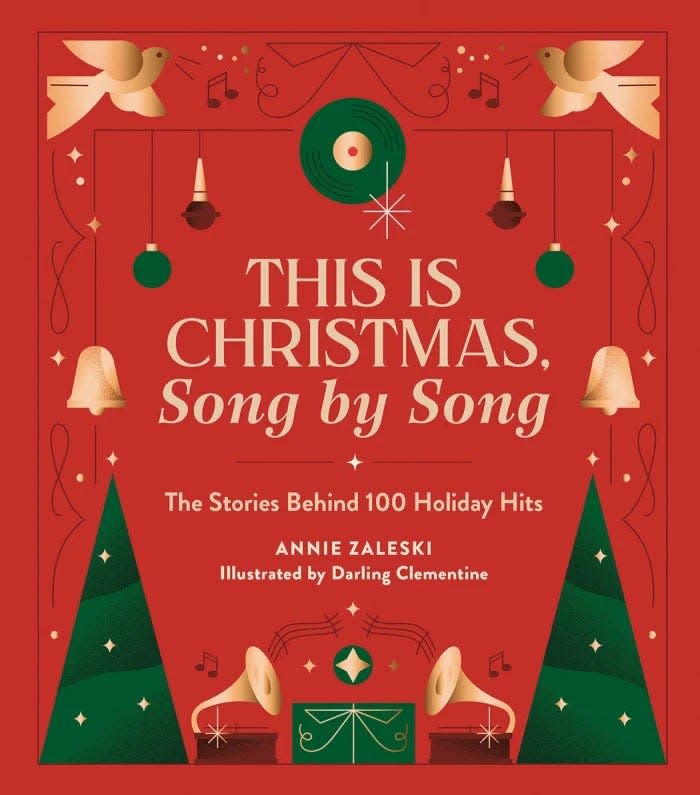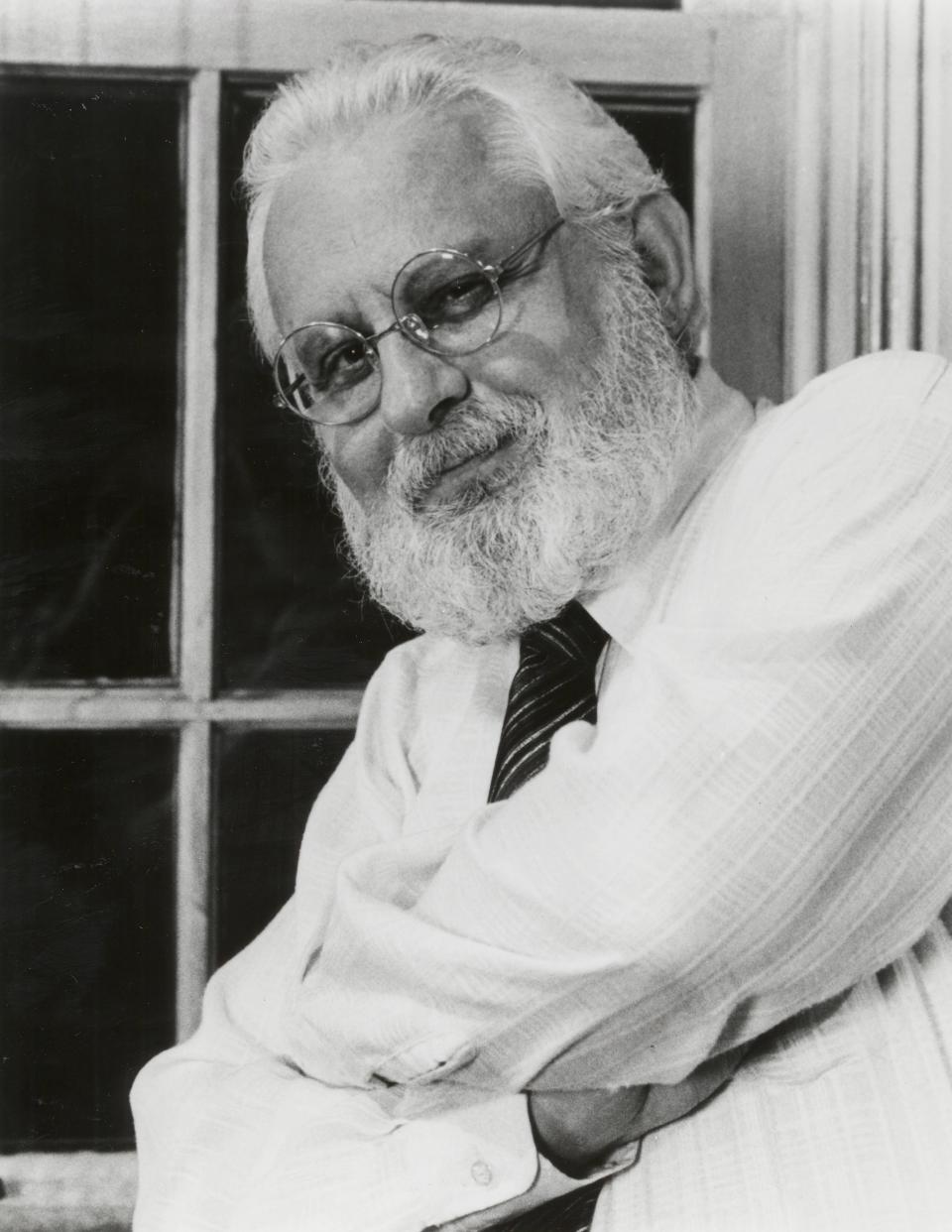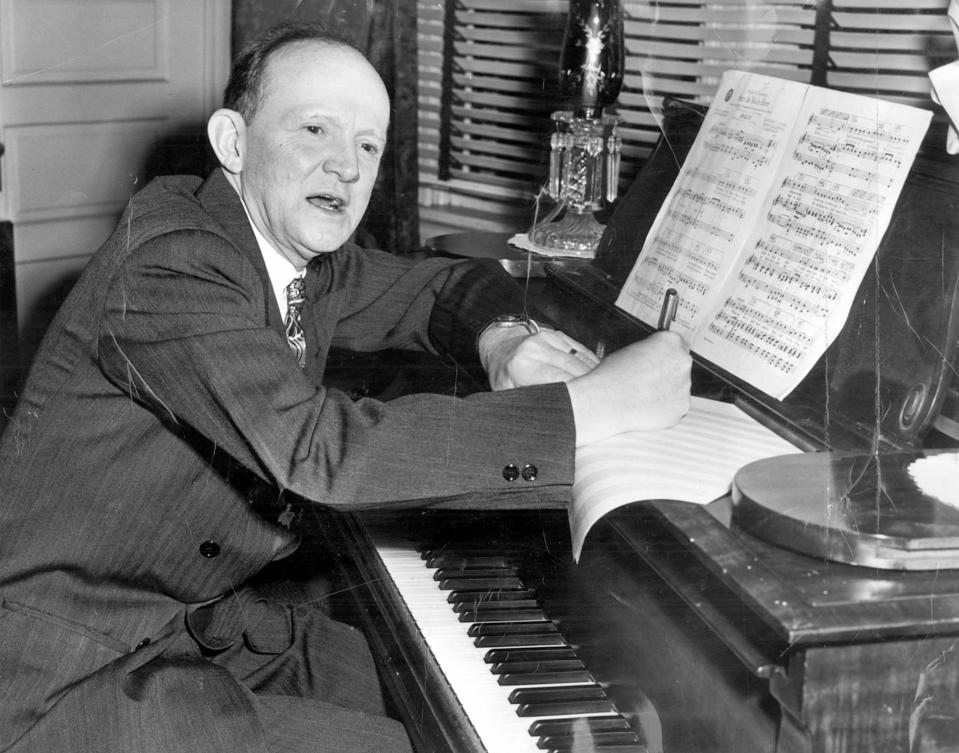Santa Claus is comin’ to ... Cincinnati? 6 Christmas songs with Cincinnati ties
Christmas music sets the tone for the holidays.
Some people start playing carols a bit early (Nov. 1?). Some folks stick to tried-and-true classics while others have a song or two that they just cannot stand (a viral survival game called Whamageddon sees who can last longest without hearing Wham!’s 1984 song “Last Christmas”).
Cleveland music journalist Annie Zaleski knows about them all.
In her book, “This Is Christmas, Song by Song: The Stories Behind 100 Holiday Hits,” Zaleski delves into the history of the most popular Christmas tunes and the artists that made them memorable, from Bing Crosby to Taylor Swift. She included some offbeat choices as well, like “Weird Al” Yankovic’s “Christmas at Ground Zero” and “Fairytale of New York” by The Pogues.

Each song gets a two-page write-up, revealing the stories behind the composition and placing them in historic and cultural context.
Among the 100, there are several with strong Cincinnati ties. That’s not a surprise considering the musical talent that came out of WLW-AM radio and King Records in Evanston.
Using Zaleski’s selections as a launching point, here are the stories behind six Christmas classics with Cincinnati connections.
Holiday cheer: It's time for Christmas music! 50 of the best songs to get you in the holiday spirit
‘Suzy Snowflake’ by Rosemary Clooney (1951)
Maysville, Kentucky, native Rosemary Clooney started out singing with her sister, Betty, on Cincinnati’s WLW radio in 1945. Her career really took off in 1951 when she recorded her first chart-topper, “Come On-a My House,” following that up with this playful ditty by Sid Tepper and Roy C. Bennett, who together wrote 42 songs for Elvis Presley movies.
Suzy Snowflake was the personification of winter, “dressed in her snow-white gown,” a kid-focused Christmas character song like “Rudolph the Red-Nosed Reindeer” and “Frosty the Snowman” that were popular during the post-World War II baby boom. (The song also spawned a cult-favorite stop-motion cartoon shown on Chicago television for decades.)
Clooney is also associated with “White Christmas,” the title song of the classic 1954 musical with Bing Crosby. Because Clooney and Crosby were signed to different record labels, they were not allowed to record a soundtrack together. So, each artist released their own album of the songs from the film.
‘It’s the Most Wonderful Time of the Year’ by Andy Williams (1963)
Andy Williams lived in Cheviot while he attended 9th and 10th grades at Western Hills High School before his family moved to Los Angeles in 1943. When he was 14, Williams and his brothers hosted a radio show on WLW and were friends with another local singing talent, Doris Day.
In the 1960s, the “Moon River” crooner had his own television variety show. “It’s the Most Wonderful Time of the Year” was written for his 1963 holiday special by Edward Pola and George Wyle (Wyle also co-wrote the theme to “Gilligan’s Island”). Williams also recorded the song for his 1963 Christmas album. He then performed the song every year for his holiday show with a new wintry scene of choreographed dancing.
Williams told an interviewer in 2005: “So I did that, you know, every Christmas, and then other people started doing it. And then suddenly it’s become – not suddenly but over 30 years – it’s become a big standard. I think it’s one of the top 10 Christmas songs of all time now.”
‘You’re a Mean One, Mr. Grinch’ by Thurl Ravenscroft (1966)
This song from the 1966 animated TV special “Dr. Seuss’ How the Grinch Stole Christmas!” has surprising staying power for a song about a furry green misanthrope who you wouldn’t touch with a 39-and-a-half-foot pole. There was even a recent cover version by Tyler the Creator for the 2018 animated film.
But the original is still the best, with vocals by the inimitable Thurl Ravenscroft. He wasn’t originally credited on the Grinch recording, but his baritone voice is immediately recognizable as Frosted Flake’s Tony the Tiger (“They’re grrreat!”) and one of the singing busts in Disneyland’s Haunted Mansion (“Grim Grinning Ghosts”).
The song’s lyrics were by Dr. Seuss himself, Theodor Seuss Geisel. The Cincinnati connection, though, is composer Albert Hague. Zaleski mentioned that Hague also portrayed the music teacher in the film and TV show “Fame,” but here’s the rest of his story.

Born in Berlin in 1920, Hague hid his Jewish heritage and escaped from Nazi Germany by acquiring a music scholarship to attend the College of Music of Cincinnati, which has become part of the University of Cincinnati’s College-Conservatory of Music.
Hague’s audition for Dr. Seuss was played at the children’s book author’s home. “Afterward, Seuss looked up and said, ‘Anyone who slides an octave on the word Grinch gets the job.’ The whole thing took three minutes,” Hague told UC Magazine editor Deborah Rieselman in 1997.
‘Santa Claus Go Straight to the Ghetto’ by James Brown (1968)
James Brown started his reign as the Godfather of Soul during his time recording with Syd Nathan’s King Records in the 1960s.
Brown’s 1968 album, “A Soulful Christmas,” released on the King label, features 11 original songs about the holidays, with an emphasis on the racism that Black Americans were experiencing in that tumultuous year, including the assassination of Martin Luther King Jr.
“Santa Claus Go Straight to the Ghetto” hit both topics. Written by Alfred “Pee Wee” Ellis, Charles Bobbit and Hank Ballard (Ballard wrote “The Twist” for King Records while living at the Manse Hotel in Walnut Hills), the song is “a plea for Santa Claus to make sure to visit the neighborhood that might be forgotten,” Zaleski wrote.
‘Santa Claus Is Comin’ to Town’ by The Jackson Five (1970)
This Christmas song has been used to get kids on their best behavior hoping for a visit from Santa Claus since Eddie Cantor first performed it on his Thanksgiving Day radio show in 1934.
The lyrics were penned by Covington native Haven Gillespie, who had worked as a typesetter at The Enquirer and Cincinnati Times-Star before becoming a Tin Pan Alley songwriter.

A publisher asked him to write a Christmas song because he used a vocabulary that children could understand. On the subway ride after the meeting, Gillespie thought about when he was a kid in Covington. He told Enquirer reporter George Palmer in 1974:
“It was about a week before Christmas, and I remember coming in the house and asking my mother if there was a Santa Claus.
“‘All right, young man,’ she said. ‘If you don’t wash behind your ears, I’ll tell Santa Claus.’”
He wrote the lyrics on the back of an envelope in 15 minutes, warning kids that Santa was watching and checking his list – twice. J. Fred Coots composed the music. The song has been one of the most successful of all time, earning an estimated $25 million in royalties, according to the 2012 BBC documentary “Richest Songs in the World.”
“Santa Claus Is Comin’ to Town” has been covered by nearly everybody – plus it has a 1970 Rankin/Bass animated TV special – but Zaleski chose to highlight The Jackson 5 version, sung with a child’s exuberance by 12-year-old Michael Jackson.
‘Please Come Home for Christmas’ by The Eagles (1978)
When The Eagles’ Don Henley sang this melancholy Christmas tune, he started: “Bells will be ringing the sad, sad news …” This is the most well-known version of the song. But the original artist, Charles Brown, sang about “glad, glad news” – juxtaposing his blues about being alone at Christmas to the general cheeriness of the holiday.
Brown knew a bit about sorrow. He had found success with Johnny Moore’s Three Blazers, a blues vocal group, and helped craft “Merry Christmas Baby” in 1947. But by 1960, Brown was bogged down with gambling debts, and he wound up running the music at a Newport nightclub for racketeer Frank “Screw” Andrews, according to a 2014 Enquirer article by Steven Rosen based on his 1990 interview with Brown.
King Records’ Syd Nathan heard Brown was around Cincinnati and asked him, “Could you write something as good as ‘Merry Christmas Baby’?” Brown turned in “Please Come Home for Christmas,” and recorded it as a single for King in 1960. And another Christmas classic was born.
This article originally appeared on Cincinnati Enquirer: 6 Christmas songs with Cincinnati ties
